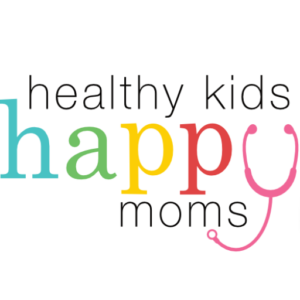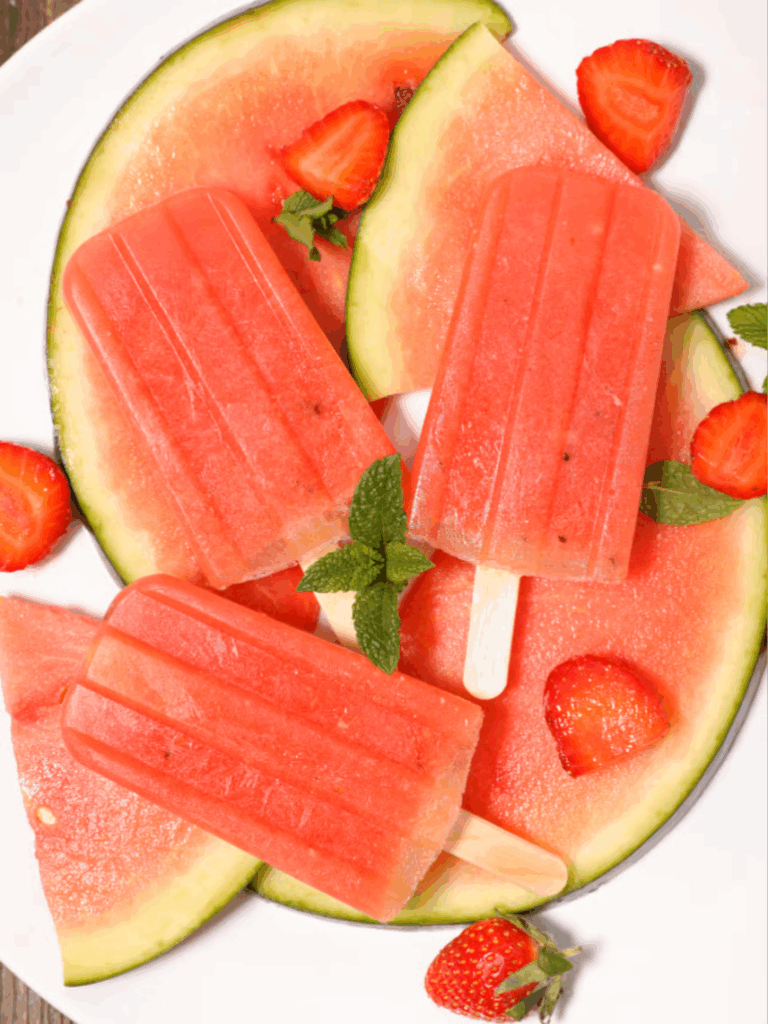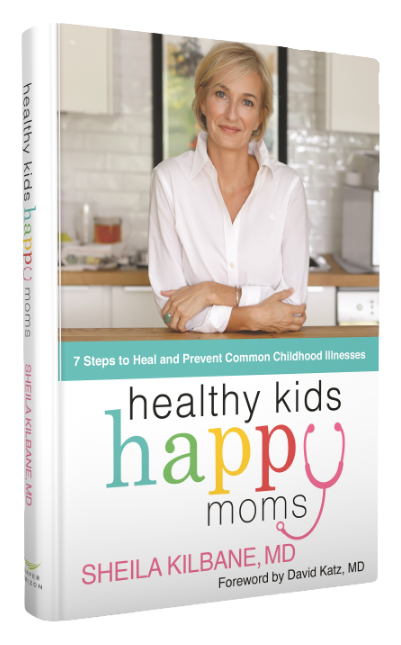Estimates on the prevalence of constipation vary, but according to the National Institutes of Health, constipation impacts (no pun intended) anywhere from 5 to 30% of children. As a nation, we spend $3.9B treating constipation.1
The condition is most common in toddlers, as well as children with underlying issues such as cerebral palsy, Down’s syndrome, and autism. Symptoms become chronic for more than one-third of the kids, and is a common reason for referral to a gastroenterologist.2 That same study showed that 12,500 American kids were hospitalized through the emergency department for constipation from 2008-2009. Constipation can be extremely stressful.
Seeing your child struggle, strain, and cry with bowel movements (BM) or soil their pants at school is heart wrenching. The physical discomfort we experience going a day without a BM is bad enough, let alone an entire week! Your stomach hurts, you feel bloated, gassy, and you may not feel up to doing your normal physical activities. The frustration and angst caused by constipation can affect the entire family.
I have seen so many kids who have struggled with constipation and/or soiling their pants—for months and sometimes years—whose symptoms improve or resolve fairly quickly when they follow my Healthy Kids, Happy Moms Program. Here’s a case from my practice that shows how quickly the body can respond to changes in diet to overcome constipation.
Case: Seven-Month-Old with Impacted Bowels
Sebastian was just over a year old when his mother brought him to see me. He had been generally healthy until a month after starting solid foods, when he developed constipation (at about 7 months of age).
His bowel movements were painful and labored. He would scream, strain, and push. It upset the entire household. His mother had to bicycle his legs, and at times she literally had to pull the stool out of his bottom (only something a parent could do).
Before seeing me their pediatrician referred Sebastian to a gastroenterologist. He said, “As long as he isn’t crying when he poops, I’m not concerned,” then prescribed Milk of Magnesia and sent them home.
Mom knew in her gut(!) that something had to be triggering this constipation. Despite taking the prescribed laxative, little Sebastian remained constipated. She wanted to know if there was anything else she could do that would allow his system to have a daily, easy bowel movement, without relying on Milk of Magnesia.

Interview with Sebastian’s mother describing his turnaround from chronic constipation
Dairy and Constipation
I explained to this wonderful mother the high correlation between dairy intake and constipation (see study below). Since she was still breastfeeding, we had to remove dairy from both her diet and Sebastian’s. We gradually removed dairy over the ensuing three weeks (the way I outline in my book). We also added a probiotic, digestive enzymes, magnesium, fish oil, vitamin D, and aloe vera juice to Sebastian’s regimen. 3
This mother is a total rockstar and had recently published a children’s cookbook: What a Good Eater!: Baby and toddler recipes with healthy herbs and spices to add flavor and broaden your baby’s palate. She tackled their new way of eating head on.
I saw them back in the clinic a month later and Sebastian was doing great! He was no longer straining and sometimes parents didn’t even know he was going. Mom said he was like a “different child.”

Dairy and Constipation: Science Speaks
A study published in The New England Journal of Medicine looked at a group of 65 children, 6 years and younger who had chronic constipation (1 bowel movement every 3 to 15 days). 4
The study placed kids into two groups. Researchers removed dairy from one group while the other group remained on their current diet (which included dairy).
| GROUP | AFTER ONE WEEK WITHOUT DAIRY | AFTER REINTRODUCING DAIRY |
| Removed Dairy | 68% had soft, pain-free bowel movements within one week | 100% were again constipated |
What happened when dairy was removed, then re-introduced, to children with chronic constipation
The children who continued eating dairy throughout the study saw no change in their chronic constipation. I have seen the results of this study play out hundreds of times in my own practice.
The Scoop on Poop
Our highest priority with constipation is to reestablish strong digestive function. We want daily, easy, formed stools. Review the Bristol Stool chart I have included for handy visualization. It categorizes stool quality. The goal is a 3 or 4—like a snake or a sausage—I know, gross).

Your child should have a daily BM that looks like Type 3 or 4
Stools should be quick and not be a major, foul-smelling event. They will be stinky, yes, but not clear-the-room foul. Daily easy stools are one of our first indicators of a healthy gut.
If you do not uncover and remove the root cause(s) of inflammation the body will usually show additional symptoms besides loose stools or constipation. They might include reflux, eczema,, bumps on the back of the arms, chronic runny nose, recurrent illnesses such as ear and sinus infections, dark circles under the eyes, and/or wheezing (asthma). 5, 6, 7, 8, 9, 10
Water and Constipation
Dehydration can lead to constipation. As a matter of fact, one of the ways laxatives work is to draw water from elsewhere in the body to the bowels.
When you begin introducing solid foods to a baby, they will only need about 4-8 ounces of water per day while most of their liquids are coming from breastmilk or formula.
As a rule of thumb, children ages five to eight should drink about 5 glasses (1 liter) of water, and older children should drink 7 glasses (1.5 liters). Teenagers should drink between 8-10 glasses (2 liters). Here are plenty of suggestions for how to increase your child’s love for water.

Is Milk of Magnesia or Miralax® the Best Way to Treat Constipation?
The standard conventional medical treatment of constipation is often to prescribe a laxative. I used to prescribe Miralax® for years on end until I started questioning why so many kids needed a prescription medication to have a bowel movement. If you think about it, this makes sense. Kids are not born with a laxative deficiency, right?
Two common laxatives are Miralax® (generic name Polyethylene Glycol 3350) and Milk of Magnesia (main ingredient is magnesium hydroxide). Miralax® was only available as a prescription when I started practicing in 2005.
Laxatives are designed to be used for short periods of time, especially in kids. Once I began studying integrative medicine, I understood the relationship between inflammation and illness, including constipation.
After reading how our genetics interact with the five different triggers of inflammation (illustrated below), I learned how to treat cases like Sebastian’s using diet and supplements.

An illustration of how the five main triggers of inflammation accumulate in the body
Repairing digestive function
Sebastian’s family used the 5R approach to gut healing that I discuss at length in my book and in my online course. This method works for both children and adults:
- REMOVE the foods that are causing the inflammation. In this case, it was dairy.
- RE-INOCULATE the gut with good healthy bacteria using fermented foods and/or a probiotic.
- REPLACE lacking nutrients (such as Vitamin D, omega-3 fats, and magnesium) with food and/or supplements.
- REPAIR the damage that has been done by continuing a clean diet and supplementation.
- REINTRODUCE the inflammatory foods if and when possible.

Takeaways
- Dairy is a common cause of constipation.
- Become familiar with the Bristol Stool Chart. Your child’s stools should be a Type 3 or Type 4 (a snake or sausage.
- Dehydration can worsen/lead to constipation. One of the ways laxatives work is to draw water from elsewhere in the body to the bowels.
- When we support children’s bodies with nutrition and hydration, the bowels move as nature intended.
- Use the 5 Rs to heal the gut
- My Healthy Kids, Happy Moms Course has a great deal more on this topic
Schedule a FREE 15-minute informational call with my practice’s patient care specialist to discuss your child’s issues.
References:
- https://www.ncbi.nlm.nih.gov/pmc/articles/PMC4974585/
- https://www.nice.org.uk/guidance/qs62/documents/constipation-in-children-and-young-people-briefing-paper2
- https://doi.org/10.4172/2155-9600.1000523
- https://pubmed.ncbi.nlm.nih.gov/9770556/
- https://www.sciencedirect.com/science/article/abs/pii/S0091674996801606
- https://www.ncbi.nlm.nih.gov/pmc/articles/PMC3166669/
- https://doi. org/10.1111/j.1398-9995.2001.00931.x.
- https://doi.org/10.1093/ oxfordjournals.qjmed.a068619.
- Nsouli, T. M., et al. “Role of Food Allergy in Serous Otitis Media.” Annals of Allergy 73, no. 3 (September 1994): 215–19.
- https://doi.org/10.1056/NEJM199810153391602








